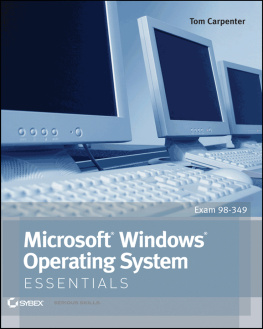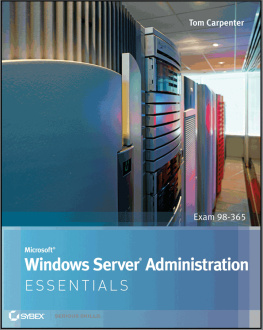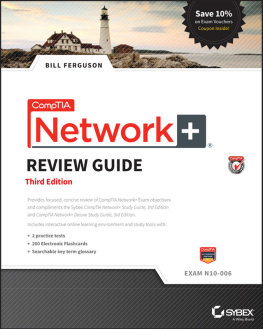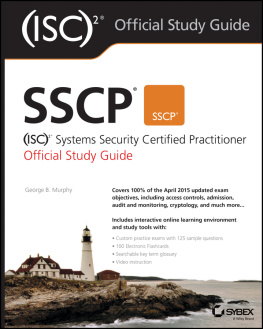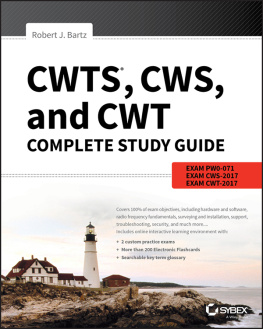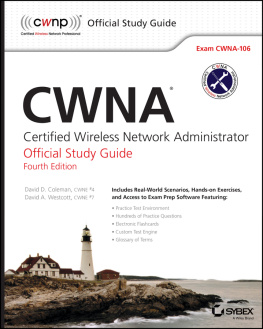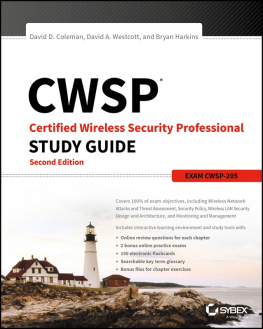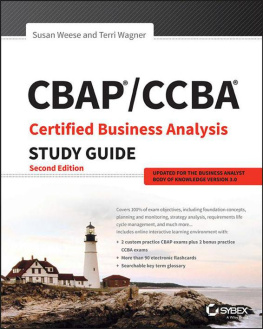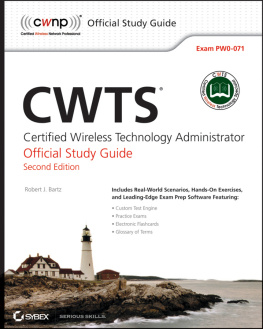Copyright 2016 by CertiTrek Publishing. All rights reserved. Printed in the United States of America. Except as permitted under the United States Copyright Act of 1976, no part of this publication may be reproduced or distributed in any form or by any means, or stored in a data base or retrieval system, without the prior written permission of the publisher.
All trademarks or copyrights mentioned herein are the possession of their respective owners and CertiTrek Publishing makes no claim of ownership by the mention of products that contain these marks. Trademarks include CWNP, CWTS, CWNA, CWSP, CWDP, CWAP, CWNE, and CWNT.
First printing June 2016
ISBN: 978-0-9967213-8-7
| Technical Reviewer | Copy Editors |
| Lee Badman | CWNP Staff |
| Authors | Production Supervisor |
| Tom Carpenter | Josie Miller |
| CWNP Staff |
| Project Manager |
| Brad Crump |
Introduction
WLANs are pervasive and problems in WLANs are nearly as common. The WLAN engineer must have troubleshooting skills and understand the operations of WLANs in order to troubleshoot them effectively. The Certified Wireless Analysis Professional (CWAP) certification proves that you have this skillset.
Wireless troubleshooting involves knowledge of RF operations, 802.11 protocols, analysis tools (such as protocol and spectrum analyzers), and troubleshooting methodologies. All of these knowledge areas are addressed in the CWAP-402 exam, making a CWAP-certified professional an individual you can trust to analyze networks and quickly resolve any problems discovered. From performance tuning to connectivity issues, the CWAP-certified professional is prepared to tackle the job.
In order to obtain your CWAP certification, you must also possess the CWNA certification. It is a prerequisite to be qualified for CWAP certification status. The exam objectives are listed below; however, you can learn more about the CWAP certification and its requirements by visiting the CWNP.com website and selecting Certifications > CWAP.
CWAP-402 Exam Objectives
The CWAP-402 exam is organized into four knowledge domains as follows:
Troubleshooting Processes5%
802.11 Communications25%
WLAN Hardware15%
Protocol and Spectrum Analysis35%
Troubleshooting Common Problems20 %
This breakdown simply means that 5% of the questions on the exam will be in the first knowledge domain, 25% in the second, and so on. As you can see, this means that the largest pool of questions will come from the Protocol and Spectrum Analysis knowledge domain.
The following detailed objectives list should be used as your guide during exam preparation. All exam questions are written to the objectives.
CWAP-402 Objectives
1.0 Troubleshooting Processes5%
1.1 Understand industry and vendor-recommended troubleshooting processes and implement the same to resolve common 802.11 wireless networking problems.
1.2 Apply the OSI Model to the troubleshooting processes and problem resolution methods used in 802.11 wireless networks.
1.3 Use the appropriate tools (network analysis and operating system tools) to troubleshoot specific problems including no network connectivity, slow network performance, unavailable resources, and unavailable services.
2.0 802.11 Communications20%
2.1 Explain the 802.11 communications processes including authentication, association, security negotiation, frame transmission, and factors impacting data rates.
2.2 Understand the different WLAN architectures in use and their impact on performance and operations.
2.3 Understand and explain the 802.11 frames including general frame format, management frames, control frames, and data frames, and how they apply to WLAN analysis.
2.4 Understand and explain the 802.11 PHY header and preamble and the indications for WLAN performance and operations.
3.0 WLAN Hardware15%
3.1 Understand client devices and operations including radios, drivers, supplicants, and implementations.
3.2 Describe and discover access point (AP) options, configurations and behaviors, including internal and external antennas, Ethernet connections, power options, and management options.
3.3 Explain the functionality of WLAN controllers and managers including protocols used, installation locations, and supported data communication options.
3.4 Describe and implement WLAN analysis hardware for protocol analysis and spectrum analysis.
3.5 Describe and analyze wired infrastructure hardware including routers and switches as well as servers and services.
4.0 Protocol and Spectrum Analysis35%
4.1 Describe the common functionality and features of protocol analyzers.
4.2 Demonstrate the ability to install, configure, and use a protocol analyzer to capture and analyze WLAN traffic.
4.3 Demonstrate the ability to use a protocol analyzer to capture the appropriate wired traffic related to WLAN operations.
4.4 Define terminology related to spectrum analysis including SNR, duty cycle, sweep cycles, signal strength, resolution bandwidth, and utilization.
4.5 Understand the common functions and features of a protocol analyzer as it relates to WLAN analysis.
4.6 Demonstrate the ability to install, configure, and use a PC-based spectrum analyzer to analyze RF activity in an area.
4.7 Recognize RF patterns of common devices including 802.11 devices, Bluetooth devices, microwave ovens, wireless video devices, and cordless phones.
5.0 Troubleshooting Common Problems20%
5.1 Understand and explain common wired problems that impact the WLAN including DNS, DHCP, switch configuration, WLAN controller access, and PoE.
5.2 Demonstrate the ability to troubleshoot wired issues using protocol analyzers, operating system commands, and hardware troubleshooting.
5.3 Select the appropriate location for placement of a protocol analyzer on the wired network and use it to troubleshoot common issues including DHCP, DNS, and data communications issues.
5.3 Analyze and repair Quality of Service (QoS) issues on the wired side of the network.
5.4 Recognize and repair common WLAN issues including insufficient capacity, lack of connectivity, interference, and QoS problems.
5.5 Diagnose and repair roaming problems including dropped VoIP calls, broken connections, and lack of reconnect.
5.6 Understand and repair issues related to WLAN security including authentication, encryption, and mobile device management (MDM).
5.7 Recognize and repair common client-side problems including unstable drivers, configuration errors, incompatible supplicants, and operating system bugs and vulnerabilities.
Target Audience
As an important note, this book is written for those preparing for the CWAP certification and not as a general guide to wireless networking that also happens to include analysis. You will find, in the very first pages that this book is written to an individual who already understands wireless networking from a functional perspective. No review of basic 802.11 fundamentals is to be found here. Therefore, if you are CWNA certified, you are ready to begin exploring this book with full understanding. However, if you are not CWNA certified, you should have extensive knowledge of wireless networks before venturing further.


